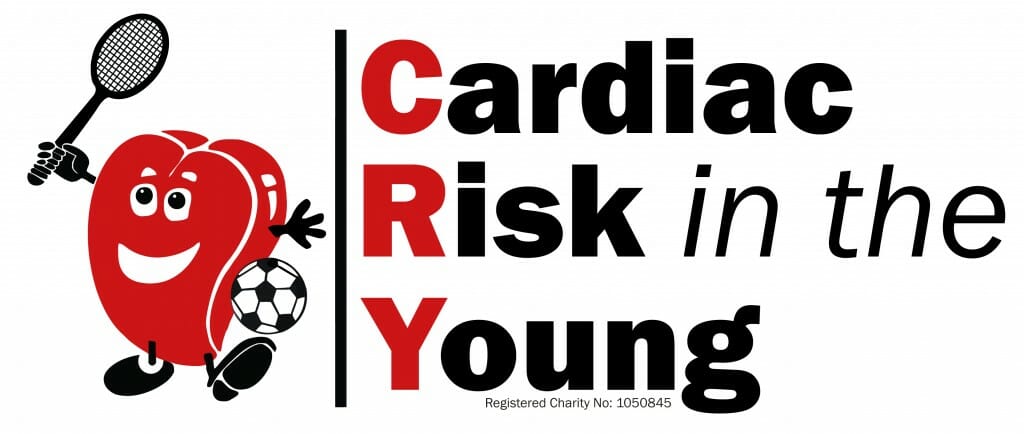An interview with CRY Research Fellow Dr Raghav Bhatia
CRY Research Fellow Dr Raghav Bhatia’s primary research interests include evaluating the role and efficacy of cardiovascular screening in individuals aged 14-35, which incorporates the challenges and opportunities catalysed by the COVID-19 pandemic.
Earlier on in the pandemic, Dr Bhatia led on consensus recommendations, aimed at providing practical answers to pertinent questions being posed by the sporting community around safe participation in exercise. (“Exercise in the Severe Acute Respiratory Syndrome Coronavirus-2 [SARS-CoV-2] era: A Question and Answer session with the experts Endorsed by the section of Sports Cardiology & Exercise of the European Association of Preventive Cardiology [EAPC].” Bhatia RT, Marwaha S, Malhotra A, et al. Eur J Prev Cardiol. 2020)
The recommendations were endorsed by the European Association of Preventive Cardiology (EAPC) and widely adopted and utilised by sporting bodies which included the Rugby Football Union (RFU), English Institute of Sport (EIS), and the English Football Association (FA).
A twinned review (“The Impact of COVID-19 on the Continuity of Cardiovascular Care.” Bhatia RT, Gati S, Papadakis M, Sharma S. Eur Heart J. 2021) provided an overview of the challenges posed by the pandemic on cardiovascular services, whilst suggesting potential solutions based on current models of care.
With the above in mind, Dr Bhatia joined us in conversation to discuss all things COVID-19 related.
What are the main ways COVID-19 has impacted people with cardiovascular conditions?
Whilst COVID-19 can be contracted by all individuals, multiple studies have demonstrated that individuals with established cardiovascular disease, and those with risk factors such as diabetes mellitus, hypertension and obesity, are associated with an increased morbidity and mortality.
Case fatality is also higher in older age groups, with the highest mortality in those aged ≥80 years in whom mortality is six times higher than in younger patients. Furthermore, patients with heart failure have significantly poorer outcomes including in-hospital complications.
What are your current research interests, specifically around COVID-19?
Firstly, in my capacity as a Research Fellow I am grateful to the families and supporters who fund our screening events and research. It is with this support that I am currently working on two large scale projects which 1) address the impact of COVID-19 infection in young individuals aged 14-35, who attend our screening events and 2) outcomes of cardiac screening in athletes following COVID-19 infection.
Overall, we aim to address current knowledge gaps around the epidemiological aspects of the disease and impact on individuals who engage in regular physical activity, as well as enhance our understanding around the optimal screening strategies.
How much do you think the increased use of remote technology during the pandemic can help us moving forward with new remote care for people with cardiovascular conditions?
Largely due to necessity, aspects of e-health, which includes utilising information technology and communication technology to aid patient care, have been broadly adopted by healthcare systems. Telemedicine has been responsible for the buoyancy in maintaining outpatient services through virtual consultations.
Meanwhile, mobile applications and wearable technologies continue to empower patients in their management. For example, cardiac rehabilitation services, which have traditionally been delivered in a hospital setting, saw an effective shift towards home-based cardiac rehabilitation.
Whilst the pandemic has accelerated the utilisation of remote technologies, it has emphasised the importance of 1) risk stratifying patient groups in whom more traditional models of care with face-to-face encounters would provide safer and more effective care; 2) comparing clinical outcomes in specific patient groups using different models of care; 3) evaluating patient experiences where remote care has been delivered; and 4) ensuring adequate infrastructure, training, and investment.
Specifically, with reference to our CRY screening programme, we are evaluating the potential incorporation of remote technologies in tandem to our nationwide mobile screening units. This takes into account potential logistical issues such as connectivity, evaluation of licensed platforms, technologies for ECG acquisition, and most importantly governance.
Online meetings and conferences have been used more than ever through the pandemic as well. How could this continue and help us with education in the future?
The online shift in medical education has been positively received by colleagues. However, we do miss the interaction and networking opportunities from in person meetings!
We recently held the 7th EAPC Sports Cardiology Course & CRY International Conference virtually in liaison with Wondr Medical, over two afternoon sessions. 242 delegates joined us from over 30 countries, with attendees spanning a broad range of medical specialities.
In addition, our MSc in Sports Cardiology, the only programme of its kind in the UK and Europe, taught by world-leading experts from the Centre for Inherited Cardiovascular Conditions and Sports Cardiology at St George’s NHS Foundation Trust, has incorporated hybrid models of teaching, which include in-person and remote sessions, in an attempt to balance and maximise learning opportunities for students. These examples from our own experience, have been positively received by audiences.
In my opinion, where feasible, adaptive online learning interfaces should complement in-person meetings and conferences. One of the biggest positives the pandemic has brought, has been subsidised or free access to online events, whereby traditionally access to in-person events might have been limited due to financial constraints, including registration fees and travel. Perhaps the pandemic has accelerated industry and societies to strive towards optimal access to medical education, which balances financial and geographical constraints.
Finally, central to patient care, the digital transformation has enhanced methods of conducting multidisciplinary team meetings and has encouraged participation from an even broader audience, compared to historical meetings which were held in confined spaces.
Such practices have the potential to improve both patient care and healthcare professional education through sharing expertise, particularly outside the context of specialised referral centres.
